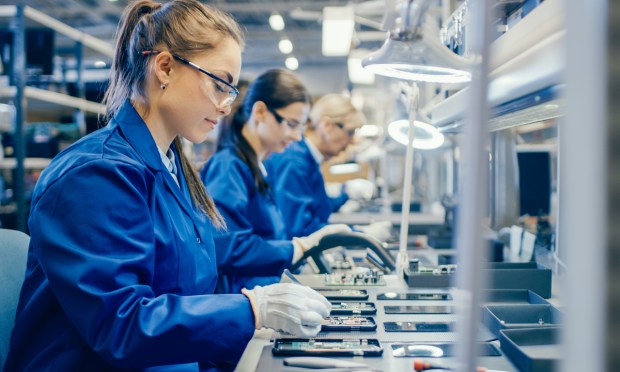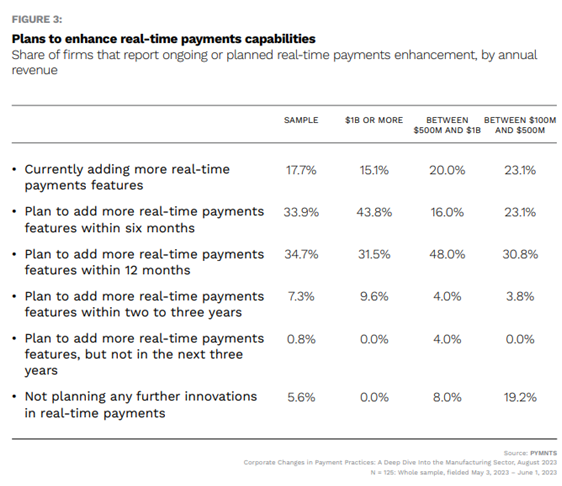Two-Thirds of Manufacturers Plan More Real-Time Payments Features Within 12 Months

The pivot toward real-time payments is sweeping what might be the most “smokestack” of the some-stack verticals within the economy.
That would be manufacturing, of course.
As reported in the report “Corporate Changes in Payment Practices: A Deep Dive Into the Manufacturing Sector,” a PYMNTS and The Clearing House collaboration, we found that a vast majority of manufacturers are on the verge, or actively embracing, real-time payments.
Speedier payments have the benefit of improving buyer-supplier dynamics, and can improve cash flow visibility up and down supply chains. Real-time payments account for 15% of outbound and 14% of inbound business-to-business (B2B) transactions by manufacturers. And in a macro environment where the certainty of cash flow is a key line of defense against the impact of unplanned expenses and emergencies — and meeting demand — adoption will only increase.
As for the better relationships forged between buyers and suppliers: Among manufacturers that make B2B payments, 91% cited this as an important reason to use real-time payments, and 84% of those that receive payments said the same. About 71% of manufacturers state that convenience is a key factor for making real-time payments a part of their operational considerations. And roughly 40% of manufacturers state that real time payments remain a top innovation priority for their companies.
The chart below shows that roughly two-thirds of the overall sample of manufacturers plan to add “core” real-time payments features within the near-term horizon — and, specifically, within the next 12 months. Only a slim percentage of manufacturers — less than 6% overall — don’t plan to add real-time payments features within the next year.
The future seems to be one where manufacturers see a declining reliance on the “old” or “traditional” way of getting transactions done. The data shows that 96% of manufacturers believe real-time payments will replace paper checks for making payments, and 87% anticipate the same for receiving payments.


